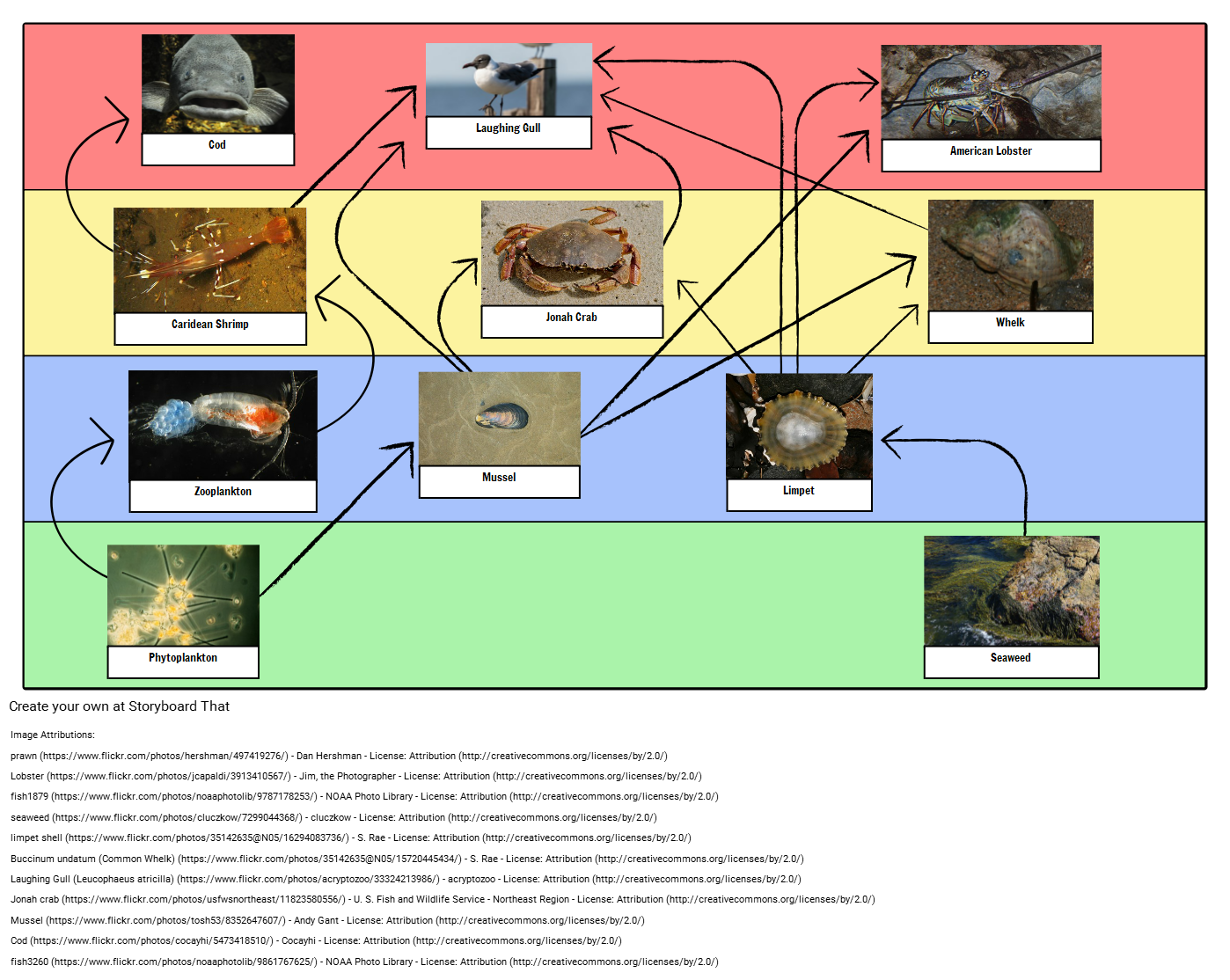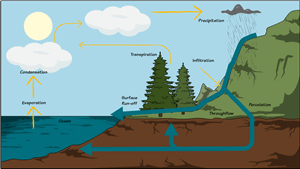
Using Science Models
To help us understand the world around us, we create mental models of phenomena. These models allow us to make our own sense of what and why something is happening. These models are personal, and may not always match someone else's model. They can often be unstable, incomplete, or faulty. On the other hand, conceptual models are shared and explicit representations or analogies of phenomena. These models can be used by scientists to help them understand the world around us. Models are used in all areas of science and offer external versions of mental concepts. Models are not a perfect representation; they are a simplified version of a system that highlights certain areas while ignoring others.
The Next Generation Science Standards (NGSS) have "developing and using models" listed as one of the eight Science and Engineering practices. Teachers are encouraged to develop students' skills in modeling at all stages of a child’s education. During early years, students can produce labeled illustrations of phenomena. In high school, students can advance their model developing skills by highlighting different variables and the relationships between them.
Visual models created on Storyboard That can be great teaching tools. However, getting students to develop and use their own models is also important for a number of reasons. In order to create an accurate model, students need to understand the topic in detail. Any errors that students make in their models can highlight gaps in understanding or misconceptions. Models can be created at the beginning and again at the end of a topic to see how students’ thinking has changed.
Models can also take a wide range of different forms, from drawings and physical replicas, to analogies and computer simulations. Not all types of models can be made on Storyboard That, but there are some that are very well suited, like visual conceptual models. Below are some examples to show you how you can use Storyboard That to create models in your science classes, no matter the type of science!
Science Model Examples
Analogy models are a great way of describing something to students they are unable to see. Teachers use them all the time when they compare a system to something the students are more familiar with. The more similarities the analogy model has to the target system, the better. Visual representations of these models help students make concept links more easily. It can be even more effective to have students create their own analogy models on Storyboard That! Discussions around the similarities and differences between the analogy are essential after they've been created. These can be teacher-led in a whole class setting, or smaller student-led discussions. Analogy models can be useful when students are learning about a wide range of topics in science, especially topics with abstract hard-to-visualize parts, like electrical circuits.
Models can also be used to represent things that can’t be seen, such as forces. As with electrical circuits, forces can be difficult for students to imagine because they can’t be physically seen. Students can create force diagrams using characters and scenes, with arrows to show the size and magnitude of the forces. Students are then able to think about the resultant force and the effect this has on the movement of different bodies.
Even with simple phenomena, have students create annotated diagrams to explain the scientific process. Annotated diagrams are a combination of text and illustrations that help answer a question in science. They can show processes that would otherwise be invisible, such as molecules or forces. Add a magnifying glass and give a ‘zoomed in’ view of what’s going on and to emphasize that the model is not to scale.
Use representations of the various body systems in order for students to understand the different components. Storyboard That has specific artwork that has been designed to help students understand various areas of biology, such as cells and body systems. Create narrative storyboards to look at the processes that occur within the body. When creating these models, students can dedicate a cell to describe what is occurring at each stage.
Students could also look at the digestive system at a molecular level and model the breakdown of different macromolecules into smaller, more usable parts. Students can use a range of shapes to represent molecules and enzymes, and lines to represent the bonds between the molecules.
Getting students to think about how energy moves between living things can be tricky. When teaching this topic, we normally start with a food chain. A food chain places the organisms in order and then uses arrows to show the flow of energy from one living thing to another. After food chains, we normally move students on to look at more complicated consumption relationships, modeled by food webs. These visual models can be quickly and easily created on Storyboard That using arrows and images of different animals from Photos for Class or from the Animals category.
Students can easily produce models of atoms and show how they are arranged. There are a number of ways that students can represent this, but a common way is by creating stick and ball models. Stick and ball models can show different types of atoms and the bonds between them. They are limited, however, as they only show the arrangement and bonds in two dimensions. Students can use these 2D images to create 3D models of the molecules out of modeling clay or paper.
After students have looked at how atoms can be arranged to make molecules, they can look at how atoms can be rearranged during chemical reactions. These models are helpful because they allow your students to understand that the total number of atoms is conserved during a chemical reaction. They are also extremely useful when teaching students how to balance symbol equations.
Look at the different states of matter by modeling the particles in different situations. In the activity below, students can compare what is happening at a real-world, large-scale level to what is happening at a particle level. In order to complete this successfully, students will need to combine knowledge about particles, temperature, and energy.
Models can be very useful when looking at how processes work together in Earth systems. Students can add arrows to show the movement of energy or matter. In the global warming example, the arrows show the movement of energy. In the carbon cycle example, the arrows show the movement of carbon. Students can then easily blend text into the storyboards, giving them the opportunity to explain their model. There is even a function that allows students to record their voice and attach it to storyboard.
There are many ways in which models can be used when teaching about space science. In the example storyboard below, students would draw lines from the relative positions of the Earth, Moon, and Sun to how the Moon looks from Earth. As with many models of space and our solar system, it is very difficult to get the scale correct; this is a limitation you can discuss with your students.
Evaluation Skills
Models are never perfect because they offer a simplified version of the real world phenomenon. This provides students with the opportunity to analyze and evaluate models. Create a T-Chart highlighting the strengths and limitations and discuss the precision of the model. This can then be used to come up with ideas on how to improve models and make them closer to the target phenomenon. These evaluation skills can be practiced from a young age. Young students can start to point out differences between models and the real system. These analysis and evaluation skills allow students to think deeply by using higher order processing skills to think about how to refine and improve the model. These evaluation tasks can be completed individually. Create your own assessment rubrics for a particular model using Quick Rubric.
Related Activities
How to Teach Students to Develop Scientific Models
Introduce the Purpose and Types of Scientific Models
Explain the purpose of scientific models as representations of real-world phenomena or processes. Discuss different types of scientific models, such as physical models, conceptual models, or mathematical models.
Explain the Process of Model Development
Break down the process of developing scientific models into key steps: observation, identification of variables, formulation of hypotheses, and refinement based on evidence. Emphasize the iterative nature of model development and the importance of making revisions based on new information.
Provide Examples and Demonstrate Model Development
Present students with examples of scientific models in different scientific fields. Demonstrate how to develop a model step-by-step using a specific scientific concept or problem.
Engage Students in Hands-on Modeling Activities
Provide opportunities for students to engage in hands-on modeling activities. Assign tasks or experiments where students can create their own models to explain scientific phenomena or solve problems.
Facilitate Reflection and Discussion
Encourage students to reflect on their models and the process of developing them. Facilitate discussions to compare and evaluate different models, encouraging students to explain their reasoning and critique each other's models constructively.
Encourage Revision and Improvement
Emphasize the importance of revising and refining models based on evidence and feedback. Provide opportunities for students to revise their models, incorporating new information or alternative perspectives.
Frequently Asked Questions about Modeling in Science with Storyboard That
What are science models?
Science models are mental or explicit representations of phenomena that allow us to make sense of the world around us. They can be personal, shared, unstable, incomplete, or faulty.
Why are models important in science education?
Developing and using models is listed as one of the eight Science and Engineering practices in the Next Generation Science Standards. Teachers are encouraged to develop students' skills in modeling at all stages of a child’s education because models can help students understand the topic in detail, highlight gaps in understanding or misconceptions, and show how students’ thinking has changed.
What are some examples of science models that can be created using Storyboard That?
Storyboard That can be used to create a wide range of science models, such as analogy models, force diagrams, annotated diagrams, representations of body systems, models of atoms and molecules, and visual models of food chains and webs.
How can analogy models be used in science education?
Analogy models are useful in science education because they can help students understand abstract or hard-to-visualize topics, such as electrical circuits. Students can create their own analogy models on Storyboard That, and discussions around the similarities and differences between the analogy and the target system are essential.
- 13:13 Abseiling 3 • schrodingersduck • License Attribution (http://creativecommons.org/licenses/by/2.0/)
- Boat • The Manual Photographer • License Attribution (http://creativecommons.org/licenses/by/2.0/)
- Buccinum undatum (Common Whelk) • S. Rae • License Attribution (http://creativecommons.org/licenses/by/2.0/)
- Cod • Cocayhi • License Attribution (http://creativecommons.org/licenses/by/2.0/)
- fish1879 • NOAA Photo Library • License Attribution (http://creativecommons.org/licenses/by/2.0/)
- fish3260 • NOAA Photo Library • License Attribution (http://creativecommons.org/licenses/by/2.0/)
- Jonah crab • U. S. Fish and Wildlife Service - Northeast Region • License Attribution (http://creativecommons.org/licenses/by/2.0/)
- Laughing Gull (Leucophaeus atricilla) • acryptozoo • License Attribution (http://creativecommons.org/licenses/by/2.0/)
- limpet shell • S. Rae • License Attribution (http://creativecommons.org/licenses/by/2.0/)
- Lobster • Jim, the Photographer • License Attribution (http://creativecommons.org/licenses/by/2.0/)
- Mussel • Andy Gant • License Attribution (http://creativecommons.org/licenses/by/2.0/)
- prawn • Dan Hershman • License Attribution (http://creativecommons.org/licenses/by/2.0/)
- seaweed • cluczkow • License Attribution (http://creativecommons.org/licenses/by/2.0/)
- Space Shuttle 30th Anniversary • NASA Goddard Photo and Video • License Attribution (http://creativecommons.org/licenses/by/2.0/)
- volaaaa!!! • nettaphoto • License Attribution (http://creativecommons.org/licenses/by/2.0/)
© 2024 - Clever Prototypes, LLC - All rights reserved.
StoryboardThat is a trademark of Clever Prototypes, LLC, and Registered in U.S. Patent and Trademark Office

















